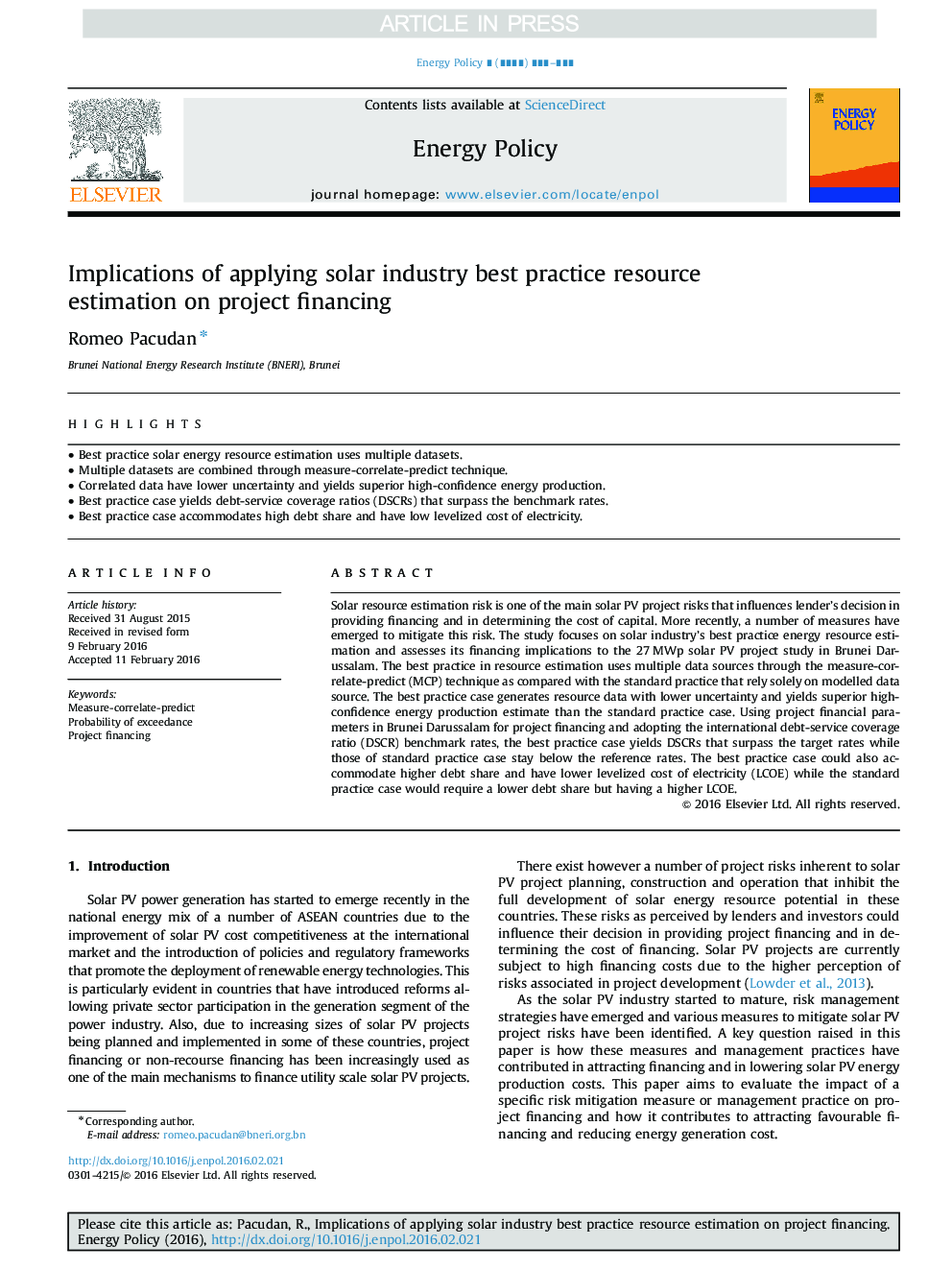| Article ID | Journal | Published Year | Pages | File Type |
|---|---|---|---|---|
| 7398939 | Energy Policy | 2016 | 9 Pages |
Abstract
Solar resource estimation risk is one of the main solar PV project risks that influences lender's decision in providing financing and in determining the cost of capital. More recently, a number of measures have emerged to mitigate this risk. The study focuses on solar industry's best practice energy resource estimation and assesses its financing implications to the 27Â MWp solar PV project study in Brunei Darussalam. The best practice in resource estimation uses multiple data sources through the measure-correlate-predict (MCP) technique as compared with the standard practice that rely solely on modelled data source. The best practice case generates resource data with lower uncertainty and yields superior high-confidence energy production estimate than the standard practice case. Using project financial parameters in Brunei Darussalam for project financing and adopting the international debt-service coverage ratio (DSCR) benchmark rates, the best practice case yields DSCRs that surpass the target rates while those of standard practice case stay below the reference rates. The best practice case could also accommodate higher debt share and have lower levelized cost of electricity (LCOE) while the standard practice case would require a lower debt share but having a higher LCOE.
Related Topics
Physical Sciences and Engineering
Energy
Energy Engineering and Power Technology
Authors
Romeo Pacudan,
